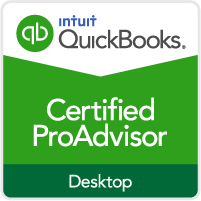Archive for year: 2017
Relief Aid & Charitable Giving
/0 Comments/in Blog/by L_McConkeyThis last month has been a devastating time on our side of the planet. Two Large Cat4/5 Hurricanes in Texas and Florida along with am 8.1 Earth quake along the Mexican Coast. Like so many, you may want to help give to Charities and Organizations that can help so many displaced people get back on their feet… But some things you need to know when you give.
When giving to Charitable Organizations, please be aware that in order for those donations to be tax deductible, an organization much be an Eligible Organization registered with the IRS. Just because an organization is asking for funds, does not mean that they are deductible for tax purposes. But don’t necessarily let that stop you from donating either, just be careful the donation is not a scam. Giving to registered organizations protects you more than giving to just anyone who pops up a GoFund me campaign. That doesn’t mean that these aren’t registered, just be careful that your money is going where you want it to go. If you donate, you should be aware of what you can and can not deduct on your Income tax returns.
There are essentially 2 kinds of donations – Cash donations and Goods donated.
- The Cash Donations are pretty straight forward. So long as you do not get any benefit from the donation, the donation is 100% includable on your tax returns (see below on those rules).
- Then there’s the Cash contributions where you donate but you get something in return – a Trip, a Dinner, 2 tickets to a sporting event – these donations are limited to the amount that EXCEEDS the Value of what you received. Example, you go onto an online auction that is benefiting a charity you like – let’s say the Humane Society – They have 2 tickets to your favorite sports team up and you bid and you win. Your bid was $500, the Fair Market Value of those tickets was $400 – your deduction is limited to $100 (Your $500 less the value of $400). Now let’s say your bid was $300 and you still won – you would have no donation value as the tickets FMV was more than what you purchased them for. Now that doesn’t mean that your $300 didn’t go to the Charity, someone bought the tickets and someone donated them and your purchase goes to the charity – however the person who donated the tickets gets the donation, but not you – you get to go see your favorite team win 🙂
- The other side of this then is the person who donates the goods for the event. If you are donating something of value that you can’t prove the FMV, get an appraisal before you donate the antique, painting or other tangible good. There are more rules on this, but that is not the topic of this blog so I’m going to stop here on this for now, just know that you can’t just give that item to a Charity and claim it to be a famous Picaso.
- Maybe you just want to go and help clean up. First get yourself registered with an Organization that can coordinate where and if they need you. If they do need you, Only your Out of Pocket Costs can be deducted. You can not deduct for your time or lost wages.
So how do you know who is and isn’t eligible? The IRS has an online Exempt Organization Search Tool where you can search the database or download the Extensive (yes, over 900,000 entities) list.
IRS Tool: https://www.irs.gov/charities-non-profits/exempt-organizations-select-check
Master List: https://www.irs.gov/charities-non-profits/exempt-organizations-business-master-file-extract-eo-bmf
Keep in mind, even if the Organization qualifies, you may not be able to take advantage of the donation you make. Here are some general rules:
- First you must be able to Itemize your deductions vs taking the Standard Deduction. Donations are only deductible on your personal tax return if you can itemize.
- If you are an LLC or S-Corp, these contributions will pass thru to the Owners on their respective K-1 forms and are NOT business Deductions. Only C-Corps (entities that are considered independent from the Stockholders) may claim the deductions on their returns.
- Be sure you have written proof from the Charitable Organization for any Contributions totaling over $250 in a calendar year. The Organization is required to provide this to you and you must keep this with your tax records
- If you donate Non-Cash Property (ie Antiques, Paintings, Jewelry) be sure you get an appraisal if your donation has a value of over $5,000.
- You may also donate vehicles but keep in mind, there are special rules that limit you to a deduction for the value that the Organization receives for that donation if/when they sell it.
- Also, it’s important to understand that if you charitable donation is more than 20% of your adjusted gross income, your deductions may be limited.
First and foremost – DO YOUR HOMEWORK before you donate. If you are not donating to a long standing organization like Red Cross or United way, be sure that the organization is legitimate. When these catastrophes happen, scammers also surface to take advantage of the situation. For additional information, below is the link IRS Publication 526 for detailed information. Or feel give us a call too.
https://www.irs.gov/pub/irs-pdf/p526.pdf
What types of meal and entertainment expenses are 100% deductible on a business return?
/0 Comments/in Tips/by M_LiskaIf meals or entertainment are provided for the benefit of your employees, you can write off 100% of the cost as a business expense with some exceptions. These are exceptions to the usual 50% write-off rule for meals and entertainment.
Common examples of expenses that can be written off at 100% include:
- Meal and entertainment expenses for a company picnic or holiday party so long as this is only 1-2 times per calendar year. In other words, you can’t do this every week and treat it at 100%
- Free coffee, bottled water, donuts, and office snacks provided to employees at the place of business.
- Free food or beverages provided to the public for promotional purposes.
- Meals provided at the place of business to more than half of the employees as an enticement for working after-hours, weekends, or holidays but be careful!! The purpose of this is to meet deadlines or cover shifts where as the employee can not leave their station during what would be their normal dinner/lunch break. However, if you are doing this as a benefit (something nice for your employees) then the value of the meals must be added to your employees income and is taxable.
- Cost of meals included on employee W-2 forms as taxable compensation.
- If you bill your clients for meals as part of the services you provide, so long at the meals are line listed on their invoice, you can include the meals on your tax returns at 100% however your client can only include these meals at the 50% tax deduction level.
What is the Estate Tax and why do we have it!
/0 Comments/in Blog/by L_McConkeyOk, so this tax seemed to be getting an awful lot of bad press lately. Certain VERY Wealthy Think Tanks have been doing their best to get you to believe that this tax is unfair and needs to be abolished. But does it really?
First, you need to understand exactly who and how this tax is calculated. I’m going to be throwing a lot of numbers at you to help show how this works so try to stick with me. Now I admit, when I was younger and not doing this for a living, I thought this was a horrible tax too, but then I learned how it worked.
The Estate Tax, intentionally misnamed the Death Tax by it’s opponents, only affects about 0.2% of the population. Most American’s (and their heirs) will NEVER, EVER pay this tax so long as the current exemption limit stays where it is at. In December 2010, President Obama signed the “Unemployment Insurance Reauthorization and Job Creation Act” which permanently (well, permanently until congress changes it) set the Personal Estate Tax Exclusion amount to $5,450,000 if the taxpayer is Single or $10,900,000 if married. When a spouse passes, the spouses exemption can pass to the surviving spouse allowing the surviving spouse to take the entire $10.9M exemption in his/her estate upon their passing.
So how does this work then? Ok… let’s say you are a single person with 1 child (this is also an important piece). You own a house which you bought for $25,000 (it was your childhood home). When you passed, your home was worth $200,000. You also had the following additional assets: Stocks worth $1,000,000 (which you paid $100,000 over your lifetime); Land purchased for $50,000 now has a Fair Market Value (FMV) of $2,000,000.
When her final tax return is completed, her Assets are Revalued at the FMV at the Date of Death. In this example, this person’s Assets are valued at $3,200,000 with a cost of $175,000 – not too bad right. Her assets have a GAIN of $3,025,000. When her final tax return is done (form 1041) she will report $3,200,000 of Asset Value less the cost of $175,000 and the Capital Gain on those assets is $3,200,000 LESS the $5,490,000 exemption leaving NOTHING to tax for the Estate Tax. Why because the FMV of those Assets is LESS than the Exemption. Her child will inherit these assets at the FMV of those assets at the date of death and His/Her Gain on these assets (for their Final Return) starts upon their parent’s death or the date they inherited the property.
So far, this all seems fair and makes sense right. The parent never really used or touched those assets they just stayed in some account or the parent used the home and land like they have since they purchased it. Now let’s look at why the Anti-Estate tax people want to eliminate this. Simply put – because they will end up paying taxes on any Gain on those assets over the Exemption Amount (remember that’s upto $11 Million). So you’re probably saying well that’s not fair. But wait.. here’s why it’s important.
Let’s say you are an uber wealthy Real Estate developer who has Buildings all over the world. One building in particular you bought for only $500,000 but it’s now worth an FMV of $5,000,000. A couple years ago you decided you wanted the Equity from that building (Equity is defined as FMV Less any loans on that Asset). You go to the bank and take out $3,000,000 and enter into Mortgage on that building – Cash in Hand – NO TAX IMPACT ON YOUR TAX RETURN THAT YEAR but you just got $3,000,000 to spend any way you want to!! So why no tax impact? Because you still own the building and it’s a LOAN, something you contract to pay back. Unexpectedly you pass away before you pay back the loan. Now, here is why estate tax is so important. Remember this person already received the cash equity from this building, maybe even gave some to their children but NEVER paid taxes on that $3,000,000. By eliminating the Estate tax they never would pay taxes on it either!! They have literally just received $3,000,000 in FREE MONEY! Their kids could just stop paying the Mortgage and the bank takes the property… but the money, it’s gone. The Tax Code says their children inherit the Building at the $5,000,000 FMV at the date of their parent’s death. And let’s say they decide to just sell the building for $4,950,000 – which represents a LOSS on their taxes; the children would still end up with another $1,450,000 of TAX FREE MONEY because they sold the building at a loss and that free money, well that was part of their parent’s estate.
So what the Estate tax actually does is RECOGNIZE the PASSIVE INCOME (or Appreciation) that was locked up in ASSETS during the Taxpayers lifetime. Think of it as a “GAP” Tax rather than an Estate or Death Tax. As this tax catches all the Passive Earnings that you’ve never been taxed on. Most of us only get paychecks or maybe we run a small business and get Earnings from that business but that money is literally taxed every year on our tax returns. If we are among those fortunate enough to buy Investment Assets, we still get an Exemption on that value but only when we exceed that Exemption do we pay taxes on those Investments. Everyone gets the same exemption – EVERYONE GETS $5,490,000.
So, have I convinced you yet why having the Estate tax is Fairer than NOT having the estate tax? And don’t take to the argument that the money was worked for… it’s not, that money has already been taxed. This is a tax on the PASSIVE or better yet, APPRECIATION of the asset that each of us would recognize if we sold it BEFORE we passed away… only then, it’s called CAPITAL GAIN!
I hope this helps shed some light on how this tax works. I hope it helps explain how eliminating this allows only those seriously wealthy people to avoid paying taxes while the vast majority of us will pay tax on almost every dime we make.
Summer Camps & Tax Credits!! No Really :)
/0 Comments/in Tips/by L_McConkeyParents are stressed in so many ways now-a-days, work, school and summer – what to do with the kids while I work! However there may be at the least, some tax relief available. And if you haven’t yet filed your 2016 taxes… don’t forget last summers camps!
Here’s the IRS Special Edition Tax Tip 2014-16, June 11, 2014
Many parents pay for childcare or day camps in the summer while they work. If this applies to you, your costs may qualify for a federal tax credit that can lower your taxes. Here are 10 facts that you should know about the Child and Dependent Care Credit:
- Your expenses must be for the care of one or more qualifying persons. Your dependent child or children under age 13 usually qualify. For more about this rule see Publication 503, Child and Dependent Care Expenses.
- Your expenses for care must be work-related. This means that you must pay for the care so you can work or look for work. This rule also applies to your spouse if you file a joint return. Your spouse meets this rule during any month they are a full-time student. They also meet it if they’re physically or mentally incapable of self-care.
- You must have earned income, such as from wages, salaries and tips. It also includes net earnings from self-employment. Your spouse must also have earned income if you file jointly. Your spouse is treated as having earned income for any month that they are a full-time student or incapable of self-care. This rule also applies to you if you file a joint return. Refer to Publication 503 for more details.
- As a rule, if you’re married you must file a joint return to take the credit. But this rule doesn’t apply if you’re legally separated or if you and your spouse live apart.
- You may qualify for the credit whether you pay for care at home, at a daycare facility or at a day camp.
- The credit is a percentage of the qualified expenses you pay. It can be as much as 35 percent of your expenses, depending on your income.
- The total expense that you can use for the credit in a year is limited. The limit is $3,000 for one qualifying person or $6,000 for two or more.
- Overnight camp or summer school tutoring costs do not qualify. You can’t include the cost of care provided by your spouse or your child who is under age 19 at the end of the year. You also cannot count the cost of care given by a person you can claim as your dependent. Special rules apply if you get dependent care benefits from your employer.
- Keep all your receipts and records. Make sure to note the name, address and Social Security number or employer identification number of the care provider. You must report this information when you claim the credit on your tax return.
- Remember that this credit is not just a summer tax benefit. You may be able to claim it for care you pay for throughout the year.
Claiming your Boyfriend or Girlfriend on your return? Yes, You can!! (Maybe)
/0 Comments/in Tips/by L_McConkeyDid you know that you can claim your Boyfriend or Girlfriend (Partner) on your Personal Tax return!! However there are a few criteria you must meet in order to take advantage of this little known rule.
In order to take advantage of this, your partner must meet the following tests…
- The Partner must be a U.S. Citizen, Resident Alien or a Resident of Canada or Mexico
- Can not be the Qualifying Child of the taxpayer
- You must have lived together the entire year as a member of your family and cohabitation must not be against the law in your state (FYI in Wisconsin, it’s not, I just looked)
- She/He can’t have earned over $4,050
- You must have paid more than ½ her/his living expenses during 2016
- And, he/she must not be able to be claimed by anyone else (ie his/her parents, grandparent, etc)
Worst year EVER collecting TIN information?
/0 Comments/in Blog/by L_McConkeyWell.. Once again, we made it through the 1099 filing season without too many issues. But it does seem that EVERY year there is one or two vendors that outright REFUSE to provide the Tax Payer Information so that you, as a business, can get your 1099s out by the January 31st filing deadline. Having completed these information returns for over 20 years, it always surprises me when I get that one vendor that becomes belligerent about providing the information. The first thing that pops in my head is that they don’t want the IRS or the State Revenue Department knowing that they are getting income from someone. Now, if it’s on a personal level, the IRS doesn’t require INDIVIDUALS to issue 1099s to the Plumber, the Carpenter or the Landlord that you pay in your personal life. But if you are a BUSINESS, in order to deduct those same expenses on your business tax return, you AS A BUSINESS, are required to issue those pesky 1099-MISCs indicating that you paid someone $600 or more during the calendar year.
So, what do you do when you encounter one of these vendors.
First and foremost – CHANGE YOUR INTERNAL POLICY!! Make it a policy in your business that if you issue payment to ANYONE for services, that you do not issue a check until you collect the W-9 Form from them! It’s so much easier to just tell them that your system doesn’t allow for payments to be issued UNLESS this information has been entered into the software. And you can of coarse use the “My accountant won’t let me issue checks without this” excuse. Let us take the heat if that’s easier. But get the W9 form upfront! It will also make the payee much less uncomfortable providing the info when it’s a payment they seek. If/when you ask for that information a year later, they may not even remember doing business with you in the first place.
But ok, you’ve already paid them so now what? I typically use a 3 step process….
First attempt, I start with calling, emailing or faxing to collect the information from them. 99% of the time, this is all I need to do. Most businesses understand that they are required to provide you with this information and don’t make a fuss about it. Sometimes it may take 2-3 attempts, but normally they will send the information. THAT BEING SAID… If you are the RECIPIENT… Don’t just send the W9 out because you get asked! Be sure that you actually did do business with the Person/Business that is requesting the information. Remember that ID thieves will try any number of methods to obtain your information so just take a bit of caution before you just send this out!! And if, you don’t feel comfortable giving us, the accounting firm, the information, just indicate to the requester (if it’s not the business owner asking) that you gave it to your customer. We, the accounting firm, will understand and can the get the information from our client.
Second attempt, I send another email or call indicating that if they don’t provide the information that the IRS REQUIRES the payee to withhold 28% of all payments because they failed to provide the information. This is right on page 2 of the W9 form, and usually, this is more than enough of a deterrent for the provider to give in and provide the information – again, to the recipient… if you don’t feel comfortable giving it to someone just because they say they are an accounting firm… give it to your customer and tell the accounting firm you did so!
Third and final attempt, make my last communication much more stern. I indicate to the recipient that this is something that they are required to do, that the IRS requires that they provide this information and if they don’t provide it, I am required to send a 1099 anyway to the IRS with the words “Refused to Provide” where the tax ID is supposed to go on the form. Have I had to do this? Yes unfortunately. It amazes me to no end that someone would think that I’d waste my valuable time trying to collect something that I really truly didn’t need. Now, back to my first step, do I get that they are being cautious when I, an outsourced accounting firm calls…. YES, but they could just give the info to their customer and let their client give it to me. I’m good with that, just don’t outright refuse to do this!
Finally, when every attempt has failed and the supplier/vendor/service provider just outright refuses, I send the 1099 just as I indicated I would with the words “Refused to Provide” in the box labeled Recipient’s Identification number. I then send this 1099 and a letter to the IRS explaining that this business refused to provide the tax identification number. You may be wondering, why do I bother to do this? I do this because the fines to my clients could be SO huge that I want to be sure that we have done everything that I am required to do to ensure that my client does not end up with the fines. After all it wasn’t their fault that their vendor refused causing them to not have the information they needed.
Moral of the story…. Get the W-9 form before you even give them the check! It’s so much eaiser.










